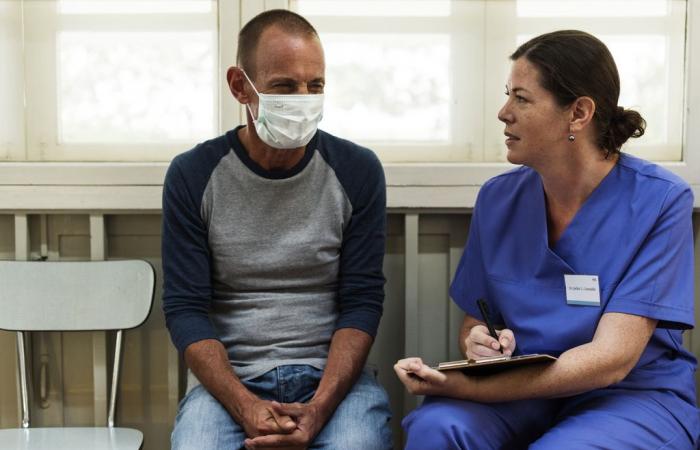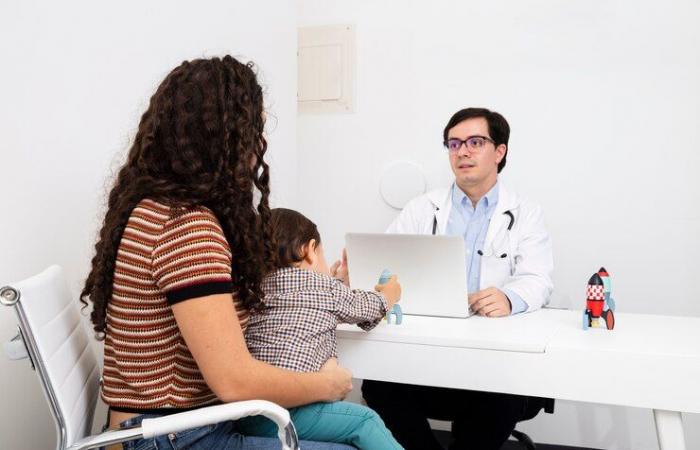“Every person living in the world should have the right to have a family doctor because, ultimately, he is a health professional who knows you, who knows who you are, who cares for you over time, who knows contextual aspects,” says the president of the Argentine Federation of Family and General Medicine (FAMFyG). , Karin Kopitowski. A patient of the doctor, Nora Converti, confirms: “The benefits of having a family doctor are and were many because the patient is seen holistically, physically, mentally, emotionally. The clinical eye means that I have not been referred to different specialties, unless it was absolutely essential.”
Although today it is most common for the doctor considered to be the primary care physician to be from another specialty, this was not always the case. The number of doctors providing comprehensive care for a person and their family decreased after World War II. At that time, technological advances promoted the emergence of multiple subspecialties, which generated “the fragmentation of individual care, depersonalization, the struggle for territories specific to each specialty, the disintegration of medical care and dehumanization, among others.” “, according to the book Historical Background of Family Medicine.
In response, these professionals considered that their field of action would not be limited to a particular organ or system, but to the whole in context. To this end, currently the training of a family or general doctor mainly includes training in the most frequent outpatient health problems, as well as the monitoring and care of problems that may require hospitalization. A family doctor “is trained to carry out different interventions such as: family interviews, care of children, adults and the elderly, performing gynecological practices, monitoring pregnancies, minor surgeries, births, psychosocial interviews and any other practice that is related to the resolution of frequent problems in their scope of professional practice,” lists the Italian Hospital, when describing family medicine.
“Our specialty is extremely broad, it covers childhood, adolescence, adulthood, senior citizens, we also see pregnant women. The contexts in which we usually work are primary care health centers and hospitals. Within our activity, we are dedicated to both health promotion and prevention. Many times we work in remote places, where we do not have many technological resources available,” says doctor Victoria Ávila, who practices in the town of Plottier, Neuquén.
According to the Federal Observatory of Human Talent in Health, in 2020 there were 6,191 general and/or family medicine doctors in the country, which constitutes a little less than 5% of all specialists in the country. “These are the specialists that the Ministry of Health of the Nation has registered and it is different from the real number because in Argentina many entities, ministries, medical colleges, universities provide specialist titles,” says Kopitowski. Although there is no data on the distribution of medical specialists in Argentina, there is data on admission to residences. Between 2018 and 2022, a total of 52,254 registrations were registered in the health team’s residence admission system, of which General Surgery (7%), Medical Clinic (6%), Anesthesiology (5%) and Tocogynecology (5% ) were the most chosen, according to the Monitoring for the Analysis and Planning of Actions for 2022 of the then Ministry of Health.
The benefits of family medicine
In the United States, adding one more doctor to primary care (primary care physician) every 10,000 inhabitants managed to reduce infant mortality by 2.5% and low weight babies by 3.2%. Adults and children with a family doctor have a lower annual cost of care, have to visit the office less, have 25% fewer prescriptions for medications and reported less difficulty in accessing care, according to the study “Primary Care: a increasingly important contribution to the effectiveness, equity and efficiency of health services. SESPAS 2012 Report” by researcher Barbara Starfield from Johns Hopkins University.
Other studies carried out in Canada found similar effects, according to the Starfield report. In children from 0 to 17 years old, it meant more use of preventive medical visits, less use of emergency rooms for non-urgent problems, and a lower rate of hospitalization for common acute cases and exacerbations of chronic diseases. In some areas of Ontario, where there are 7 primary care physicians per 10,000 inhabitants, the possibility of making early diagnoses is greater than in areas where this proportion is lower and five years more chance of life from breast cancer.
For its part, in the United Kingdom a study was carried out to find out the relationship between the areas with the best health and the doctors based there. It was found that if the number of family doctors was greater, the inhabitants enjoyed better health.
“With the population aging People have more and more health problems and at age 65 it is very common for them to have 3, 4 or even 5 problems. The best approach for these situations is a doctor who sees you comprehensively, because the patient who has many things is not well cared for in the aggregate,” says Kopitowski. Consequently, “not only do we reduce the number of unnecessary consultations with specialists, but many times the patient, no matter how educated and informed they are, does not know about the symptom they have, what it is due to and that is where the family doctor is important. . We are not derivalogists, but we deal with solving,” he adds.
For his part, Converti says that: “I believe that family medicine is the most satisfactory way to care for patients. Avoid costly and unnecessary studies. “Family medicine seems to me to be the best for the patient.”
And Ávila attests to this from the practice of the profession itself: “We are dedicated to promoting health, not just sick people. And we seek to encourage healthy habits because, in addition, the most frequent pathologies that we see tend to be those that are related to habits, that is, chronic non-communicable diseases.”


The challenge of a system in crisis
“He residence system is in crisis, people who graduate from Medicine do not choose Family Medicine, similar to what happens with Pediatrics,” Kopitowski points out as the main challenge.
Then, he adds that this specialty is very dependent on health policy, “because for us to have the reason for being in the place where we are inserted, there must be a system that prioritizes this first level of care, values it and remunerates it appropriately. . In each jurisdiction there are very different realities. All governments fill their mouths with Family Medicine and primary care, but it is something that does not end up happening as it should. A cardiologist opens a practice and everyone knows what it is. The system is organized so that people go directly there,” says Kopitowski.
Finally, Ávila relates that the economic crisis current situation is one of the main challenges: “There is a reality and that is that today many patients, in their economic urgency, weigh other needs over health care. “This causes them to eat differently, to have habits that are not the healthiest, which deteriorates their health, whether due to hypertension, diabetes or others.” On the other hand, he points out that in this context, added to the lack of general practitioners, there is less availability of supplies. This results in, for example, fewer possibilities of accessing contraceptive methods.
The work of FAMFyG
Kopitowski has been dedicated to the profession for 33 years. She currently works at the Italian Hospital of Buenos Aires, where she is the head of the Family and Community Medicine service. “By definition, a family doctor has a comprehensive vision of the people she cares for: she does not distinguish the physical or psychological problem from the context. These barriers do not exist for us, people have problems, which they bring to our consultations or we detect them,” the expert elaborates.
They work on this paradigm from FAMFyG, an organization that was born in 2001 with the desire to bring together the different provincial associations of family and/or general medicine in the country in a “common project” that would respond to the needs of the health system and organizations. and health institutions. Kopitowski explains that this project consists of proposing that: “The family doctor It is the first contact that a person has with the health system to have someone who knows him longitudinally.” The federation teaches courses, training, holds conferences and is one of the entities that the National Ministry of Health recognizes as certifying the specialty. It also has a non-partisan political beta by revealing what working conditions are like. Finally, they are called upon to prepare clinical practice guidelines and edit a scientific journal, Family Medicine Archives.
“We are probably the scientific association that structurally is most concerned about trying to avoid unnecessary interventions on people and trying to ensure that people do not medicalize their lives”says its president.








